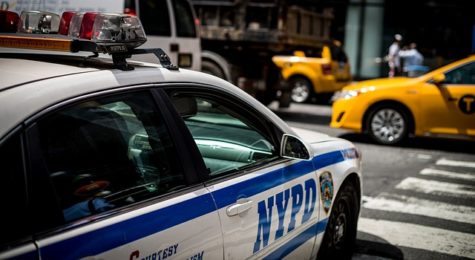PHILADELPHIA — Police officers have known it for years: When the temperature increases, so does their work. Now they’ve got science to back it up.
A recent study finds that crime rates go up when it’s hotter out, regardless of the season. It’s something that the authors say officials may want to keep in mind as climate change threatens to brings warmer days ahead more frequently.

Researchers from Drexel University examined a decade’s worth of crime data in Philadelphia, from 2006 to 2015, comparing rates to the heat index, which combines temperature and humidity to indicate human comfort. They found that overall, rates of violent crime and disorderly conduct rose when the mercury jumped. When the heat index was 98 degrees Fahrenheit, for example, violent crime rates were 9% higher than when the heat index was 57 degrees. Disorderly conduct rates were also 7% higher on the hotter days.
“Our findings are reasonable when you think about social behavior,” says co-author Leah Schinasi, an assistant research professor at the school, in a news release. “When temperatures are extremely cold or hot, people stay indoors. But as temperatures become more comfortable, more people are outdoors, which presents greater opportunity for crime.”
According to their analysis, violent crime rates were highest in the warmest months of the year, May through September. Yet they also found interesting data on unseasonably warm days: crime seemed to be particularly more prominent when it was warmer than usual. During the traditionally colder months between October and April, if the heat index reached about 70 degrees, daily rates of violent crime was 16 percent higher than when the heat index was only 46 degrees. Similarly, disorderly conduct was 23 percent higher on average on warmer days during the fall and winter.
Oddly enough, the authors found that crime rates didn’t surge even higher when there was cooler weather during the summer months.
While the findings may come as no surprise to many people, the authors say the study could be indicative of what’s to come if climate change makes warmer weather the norm in the longterm.
“It is important to recognize the implications of these climate change effects for public health, including changes in crime rates,” says Schinasi. “Although these results back up police officers’ anecdotal reports about the relationship between temperature and crime, it’s nice to have data to confirm these reports. Our results might help inform local law enforcement about ways to allocate resources during different seasons and with consideration of the local climate.”
The full study was published in July 2017 in the Journal of Urban Health.

Thank God climate change isn’t real then …
This is long known but this study fails to mention what the FBI UCR has shown for decades — those summer increases are isolated to a handful of urban jurisdictions. 38 out of 3,000 US counties, all urban, account for the entire US homicide rate elevation over developed democracy averages.